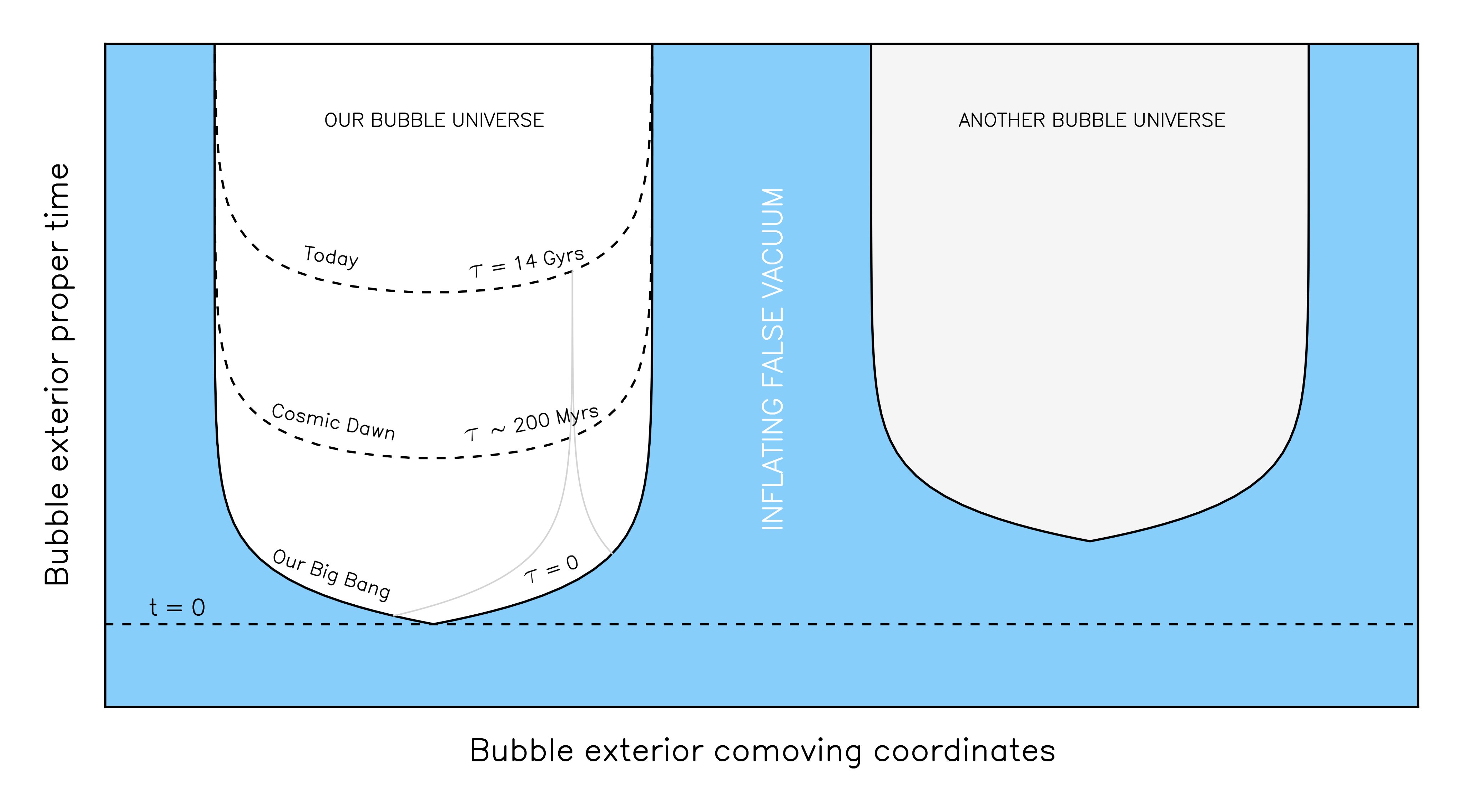nLab false vacuum eternal inflation
under construction
Contents
Idea
False vacuum eternal inflation (FVEI) can occur whenever the inflaton potential has multiple minima — in the simplest case one false vacuum (a local minimum in the potential where ) and one true vacuum (the global minima of the potential).

At any given point in space, quantum tunneling from the false vacuum to the true vacuum will eventually occur, as first found by Coleman & De Luccia 1980. In such a tunneling event, these authors found that a true vacuum bubble will form that will expand at a rate close to the speed of light. The interior of such a bubble will be described by an open (i.e. ) Friedmann universe of infinite size. For this reason, false vacuum inflation also goes by the name of “open inflation”.
If the tunneling rate per unit time and volume is sufficiently small, then once bubbles nucleate they will not be able to coalesce due to the intervening rapidly inflating false vacuum between the bubbles. In this case inflation never ends globally, leading to a multiverse picture where bubble universes nucleate ad infinitum (hence the name “eternal inflation”). Our observable universe would, in this picture, only be an infinitesimal portion of a single bubble universe out of a coutless others.
Details
(…)
Related entries
References
The classical reference on vacuum decay as such:
- Sidney Coleman, Frank De Luccia, Gravitational effects on and of vacuum decay, Phys. Rev. D21:3305, 1980 (doi:10.1103/PhysRevD.21.3305)
The original article on false vacuum eternal inflation:
- Jaume Garriga, Alan Guth, Alexander Vilenkin, Eternal inflation, bubble collisions, and the persistence of memory, Phys. Rev. D76:123512, 2007 (arXiv:hep-th/0612242, doi:10.1103/PhysRevD.76.123512)
Last revised on April 21, 2021 at 09:37:10. See the history of this page for a list of all contributions to it.